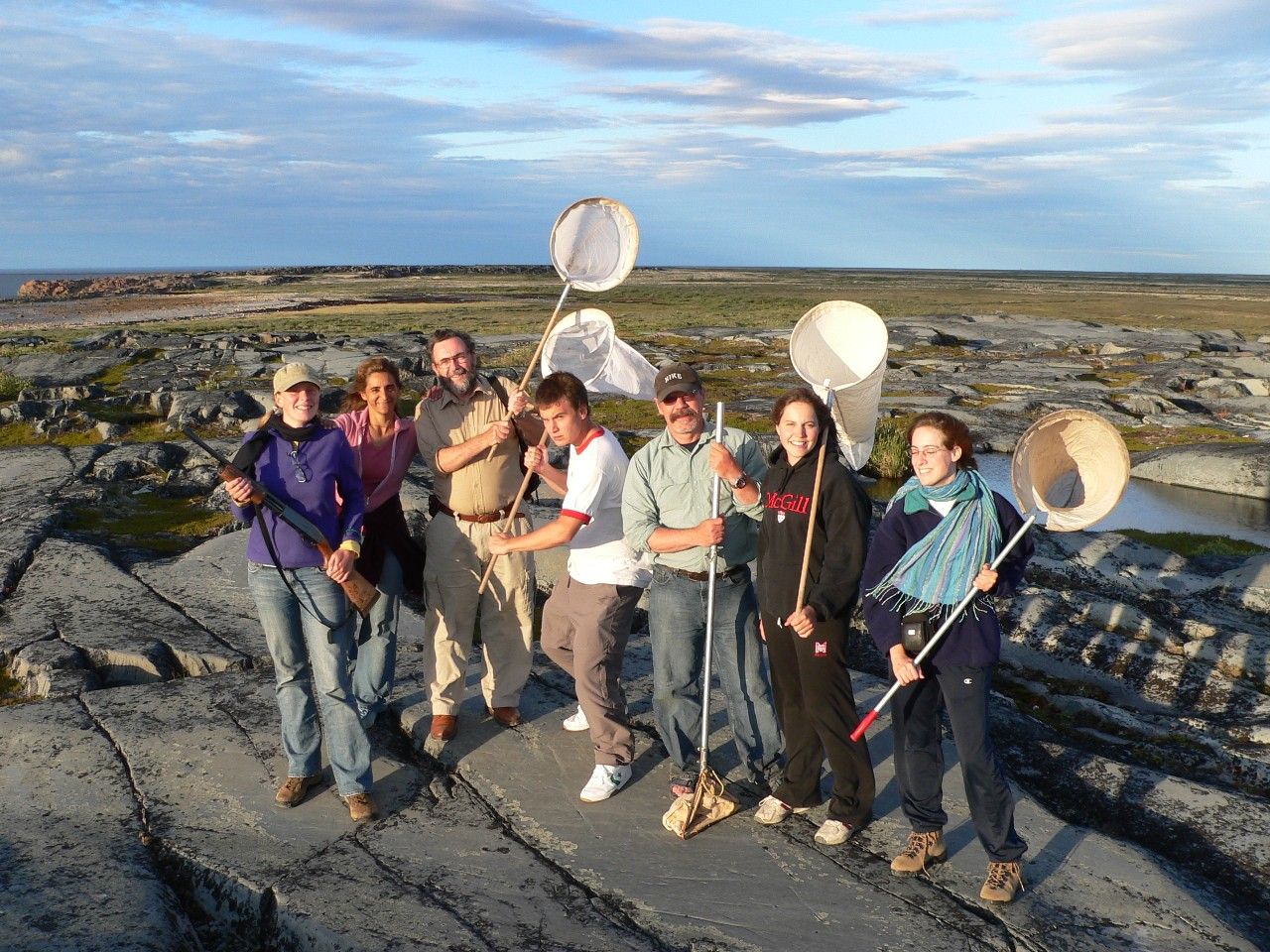 It was off to a fantastic start when students from all over the world saw four polar bears by the end of the first day. The Arctic and Boreal Entomology Course is aptly named as the Churchill Northern Studies Centre (CNSC) lies on the dividing area of landscape between the boreal forest and the treeless tundra. This course attracted nine students from Canada, Norway, France, Bangladesh and Libya. The course is headed by Dr. Peter Kevan of the University of Guelph (Guelph Ontario Canada) and Dr. Rob Roughley of the University of Manitoba (Winnipeg Canada).
It was off to a fantastic start when students from all over the world saw four polar bears by the end of the first day. The Arctic and Boreal Entomology Course is aptly named as the Churchill Northern Studies Centre (CNSC) lies on the dividing area of landscape between the boreal forest and the treeless tundra. This course attracted nine students from Canada, Norway, France, Bangladesh and Libya. The course is headed by Dr. Peter Kevan of the University of Guelph (Guelph Ontario Canada) and Dr. Rob Roughley of the University of Manitoba (Winnipeg Canada).Collecting efforts on the course resulted in four Malaise traps, three flight intercept traps, 200 plus pitfall traps, five light traps, one fan trap and many students out sampling with sweep and D-nets rounding up thousands of individual insects and hundreds of species. Broad River in the large 11,500 km2 Wapusk National Park was also sampled with the kind help of Parks Canada. This will be the first time insects species diversity will have been studied in the park.
 This year three new records of insect species were recorded in the Churchill area due the student's diligent efforts. No fireflies (Lampyridae) - which are actually not flies at all but rather in the order of beetles - had been recorded in the Churchill area. This year the students collected two specimens of Ellychnia corrusca. This firefly may have gone unnoticed in the subarctic regions before as the adults have no light organ and therefore cannot flash as other species of lampyrids are able to do. However the larvae and pupae of this species do glow as is common among all lampyrids. A carion beetle of the genus Nicophorus was recorded in the area for the first time.
This year three new records of insect species were recorded in the Churchill area due the student's diligent efforts. No fireflies (Lampyridae) - which are actually not flies at all but rather in the order of beetles - had been recorded in the Churchill area. This year the students collected two specimens of Ellychnia corrusca. This firefly may have gone unnoticed in the subarctic regions before as the adults have no light organ and therefore cannot flash as other species of lampyrids are able to do. However the larvae and pupae of this species do glow as is common among all lampyrids. A carion beetle of the genus Nicophorus was recorded in the area for the first time. The Arctic and Boreal Entomology Course coincides with the Arctic Ecology course run out of the University of Guelph. Eighteen students along with researchers from Ontario, Mexico, Norway and the UK overlapped with the Entomology course for one week and aided greatly in our insect sampling. The third new record for this region is the Black Witch Moth (Ascalapha odorata). It was collected by the Arctic Ecology course at its northernmost location. Normally the moth breeds in the Yucatan Peninsula in Mexico has been recorded as having a wide distribution range, however never this far north. The most northern observation of this moth was in Juneau, Alaska at a latitude of 58°15’N. The Arctic Ecology course now has the northern-most recording at 58°45’N.
 The Arctic Ecology course run by Dr. Paul Hebert and Dr. Peter Kevan of the University of Guelph and the Entomology Course were involved in this year's "Barcode of Life Project - BioBlitz". Dr. Hebert along with Dr. Kevan and Dr. Roughley are a part of a large project run out of the University of Guelph which will attempt to "barcode" all animal life, as far as possible, on the planet. The principle of barcoding works from the DNA sequence from the CO1-A mitochondrial gene which is common to all animal species. This barcoding technique has, to date, proven to be quite effective in determining the unique sequence of base pairs generated for each species and will hopefully provide a specific barcode for most species on the planet. The specimens collected on both courses will be sent to taxonomic specialists for traditional identification before being barcoded as part of and International Polar Y
The Arctic Ecology course run by Dr. Paul Hebert and Dr. Peter Kevan of the University of Guelph and the Entomology Course were involved in this year's "Barcode of Life Project - BioBlitz". Dr. Hebert along with Dr. Kevan and Dr. Roughley are a part of a large project run out of the University of Guelph which will attempt to "barcode" all animal life, as far as possible, on the planet. The principle of barcoding works from the DNA sequence from the CO1-A mitochondrial gene which is common to all animal species. This barcoding technique has, to date, proven to be quite effective in determining the unique sequence of base pairs generated for each species and will hopefully provide a specific barcode for most species on the planet. The specimens collected on both courses will be sent to taxonomic specialists for traditional identification before being barcoded as part of and International Polar Y